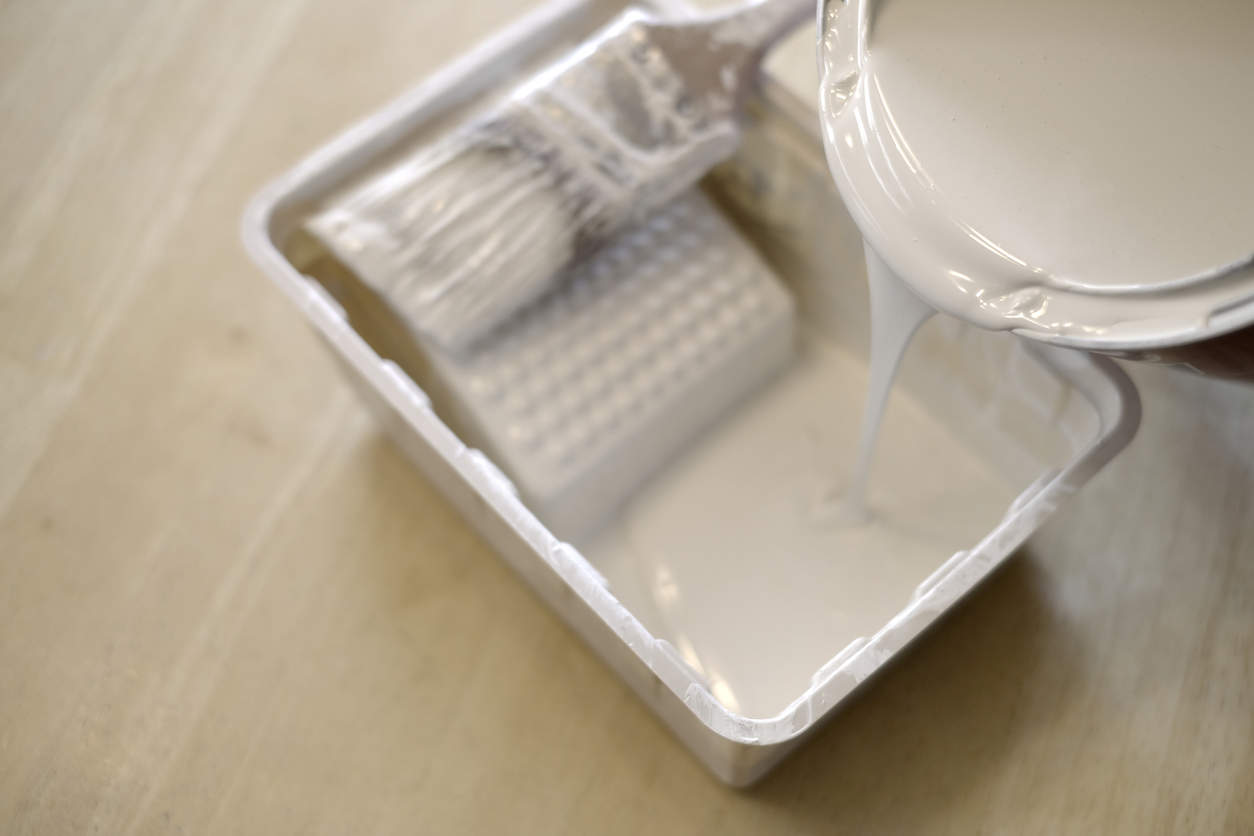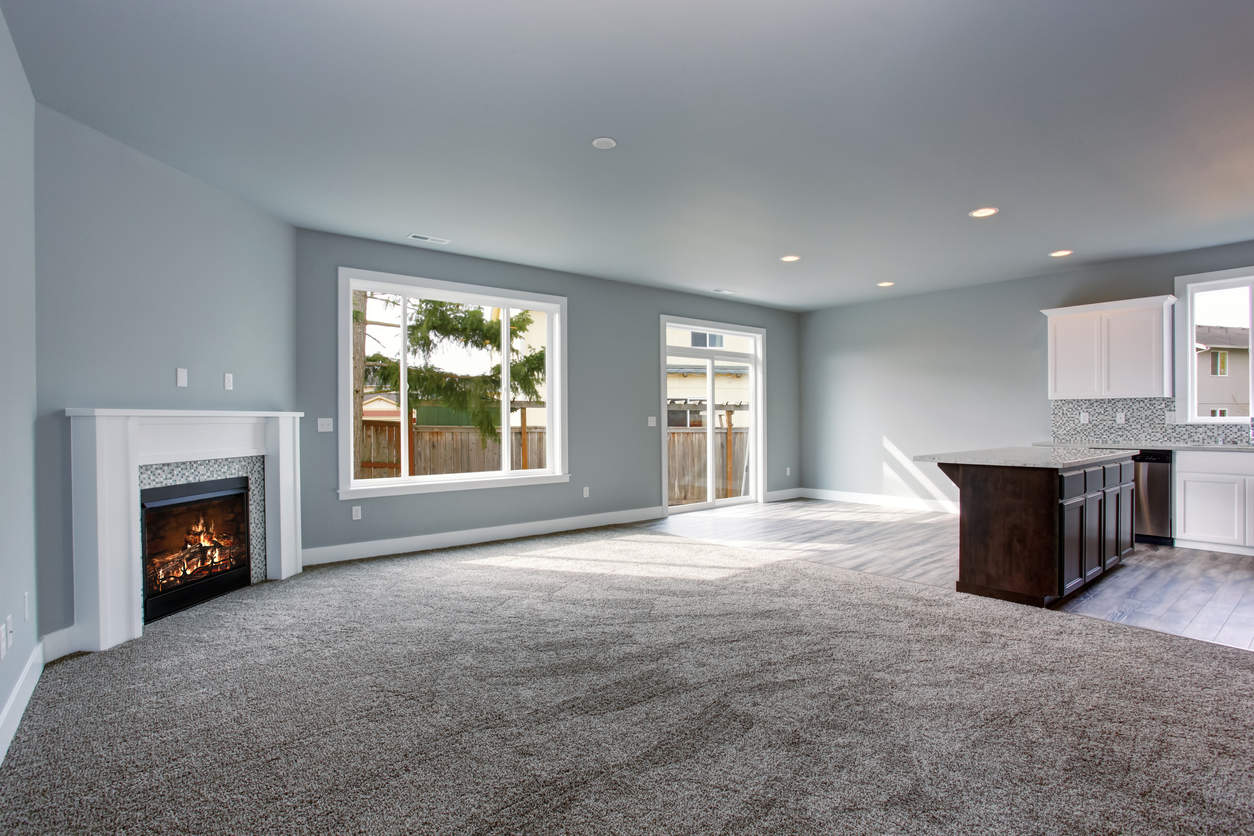Ever stood in a paint store, gallon in hand, wondering “how much coverage in a gallon of paint”? It goes without saying that it’s important to know how much paint you’ll need for your interior house painting project. Understanding this can save you time and money and help you avoid unnecessary trips back to the store.
This blog post will guide you through the factors affecting paint coverage, from the type and texture of surfaces to the choice of colors and tools. By understanding these elements, you’ll be able to approach your painting project with confidence and efficiency, leading to better results and a more enjoyable painting experience.
How Much Coverage in a Gallon of Paint? Here’s How to Figure It Out!

Understanding Paint Coverage Basics
Before diving into gallons, it’s essential to grasp the basics of paint coverage. Generally, one gallon of paint covers approximately 350 to 400 square feet. But, this number isn’t set in stone. The actual coverage depends on factors like the paint’s type and the surface you’re painting.
Surface Texture and Type
Different surfaces absorb paint differently, making this an important factor in your planning. Rough, porous surfaces such as brick or stucco tend to soak up more paint, requiring additional coats for even coverage. Conversely, smooth and non-porous surfaces like plaster or drywall typically use less paint, as they allow for a more uniform and efficient application.
Paint Color and Type
Darker colors usually require more coats to achieve even and full coverage, leading to higher paint usage. Additionally, the type of paint plays a significant role (oil-based vs water-based). Oil-based paints generally cover a smaller area compared to water-based ones.
It’s not just about quantity; quality plays a key part too. High-quality paints often provide better coverage, potentially reducing the total amount needed. This means investing in a premium paint can be more cost-effective in the long run, as you might need fewer gallons to complete your project effectively.
Application Tools
Brushes, rollers, and sprays don’t apply paint equally. Brushes offer precision but cover a smaller area and might require more paint for complete coverage. Rollers, on the other hand, cover more area quickly, though they usually use more paint.
Spraying is efficient and can be economical in terms of paint usage, but it requires skill and practice to achieve even coverage. The right tool choice depends on the specifics of your project and the finish you desire.
Environment
Temperature and humidity can significantly affect how paint behaves and spreads. High humidity can slow down drying times, possibly requiring longer intervals between coats. Extreme temperatures, either too hot or too cold, can cause the paint to not adhere properly or dry unevenly.
It’s important to paint under optimal conditions to ensure the best coverage and finish, making adjustments as necessary for your specific environment.
Calculating Your Paint Needs
So, how do you figure out your specific project’s needs?
Start by measuring the area you’ll paint. Remember, measuring your space accurately is crucial. Guessing can lead to under or over-buying. Multiply the height by the width of each wall. Then, add these numbers for the total square footage.
Remember, a gallon covers 350 to 400 square feet.
Factor in Extra for Coats
When planning your paint purchase, consider the number of coats you’ll need. For projects involving multiple layers or darker colors, it’s a good idea to add extra gallons to your estimate.
A general rule of thumb is to double your initial estimate for a two-coat application. This ensures you have enough paint to achieve a consistent, opaque finish without the frustration of running short mid-project.
Don’t Forget the Primer
In certain painting scenarios, a primer is not just beneficial but necessary. If you’re working with bare walls or making drastic color changes, applying a primer is a must for achieving the best results.
Primers help in providing a uniform base, enhancing the paint’s adhesion, and can significantly impact the overall appearance and longevity of your paint job. The coverage rate of primers is typically similar to that of regular paint, so factor this into your total paint calculation to ensure you have enough for complete coverage.

Tips for Efficient Paint Use
Getting the most out of your paint not only saves money but also time. Here are some tips to use paint efficiently:
Proper Preparation
The key to achieving optimal paint coverage begins long before the first brushstroke. Preparing your walls properly is crucial. Ensure they are clean, smooth, and free from imperfections. Patch any holes or cracks and sand down uneven areas.
This preparation enhances paint adhesion and spread, allowing for more even and efficient coverage. Investing time in wall prep can significantly improve the final look and reduce the amount of paint needed.
Quality Tools
Using high-quality painting tools is an investment in your project’s success. Superior brushes and rollers not only make the application process smoother but also maximize paint coverage.
Cheaper alternatives may seem economical but can lead to increased paint usage and uneven coverage. High-quality tools deliver paint more efficiently, reducing waste and ensuring a more uniform application, which is especially crucial for achieving professional-looking results.
Avoid Over-Application
Applying the right amount of paint is a balancing act. Over-application doesn’t equate to better coverage; in fact, it can cause issues like drips and extended drying times. It’s important to follow the recommended application guidelines.
Use enough paint to cover the surface effectively but avoid the temptation to overdo it. This approach ensures a smooth finish and helps in conserving paint, saving time in both application and drying.
Conclusion
Understanding the coverage of a gallon of paint is important for any painting project’s success. Accurate calculations and efficient paint use lead to time and cost savings. Each project is unique, so it’s essential to consider all factors, such as surface texture and color choices, before buying paint. Seeking expert advice ensures precision in quantities and the overall success of your painting endeavor.
If you’re planning a painting project but are uncertain about the amount of paint needed, consider reaching out to professionals like Alvarez Painting. Our expertise in providing precise estimates and guidance can significantly contribute to the smooth execution and outstanding results of your project.
Let our experience and knowledge work in your favor, ensuring your painting project is accomplished beautifully and efficiently!
Call us today at 919-444-8997 for a free consultation.


